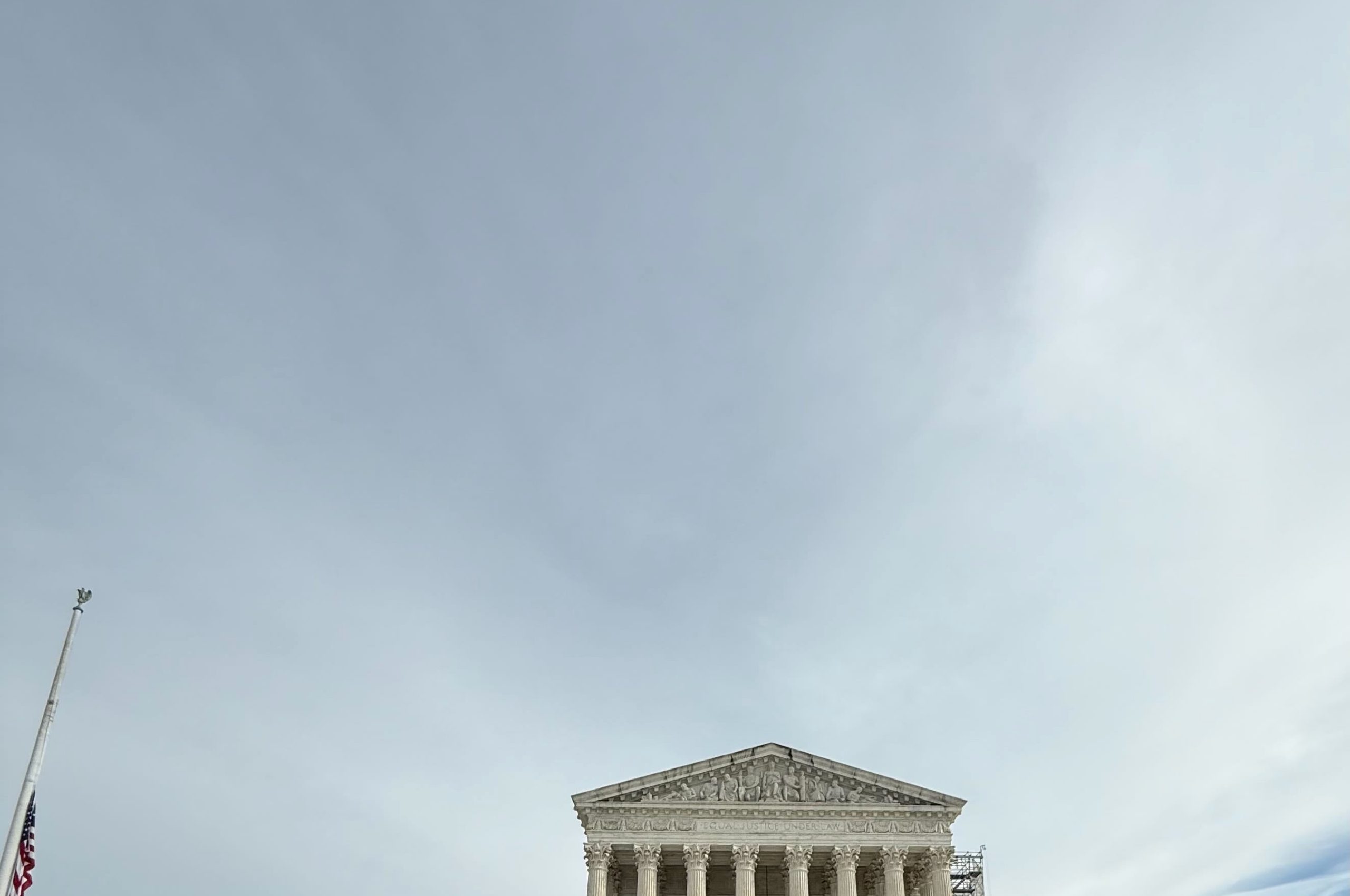Ohio woman asks court to weigh in on requirements for reverse discrimination claim


Marlean Ames says she is the victim of reverse discrimination: She was not hired for a job that she wanted, and she was demoted, because she is straight. Ames sued and brought her case to the Supreme Court. On Wednesday, the justices will hear oral arguments on whether a federal appeals court improperly required her to meet a more stringent standard for her case to go forward than if she had been a member of a minority group – for example, if she had been a lesbian.
Ames contends that the lower court’s ruling should be overturned to give everyone – whether they are a member of a minority group or a majority group – “an equal opportunity to prove their case.” But her employer counters that a ruling in Ames’s favor would, as a practical matter, allow virtually every employment discrimination case, including reverse discrimination cases, to go forward.
The case comes two years after the Supreme Court’s decision in Students for Fair Admissions v. Harvard College, in which the justices effectively ended the use of affirmative action in college admissions. That case was brought by a group alleging that Harvard discriminated against Asian-American applicants. Writing for the majority, Chief Justice John Roberts emphasized that the Constitution’s guarantee of equal treatment is “universal in its application.”
More recently, the Trump administration has dismantled or challenged diversity, equity, and inclusion initiatives – known as DEI — in the federal government and other workplaces.
Ames began work in 2004 as an executive secretary at the Ohio Department of Youth Services, which supervises the confinement and rehabilitation of children and teenagers who commit felonies. In 2014, she was appointed as a program administrator.
Ames started reporting to a new supervisor, Ginine Trim, who is gay, in 2017. In a 2018 performance evaluation – Trim said that Ames met expectations in 10 categories and exceeded them in an 11th.
In 2019, Ames applied for, but did not get, a new position as a bureau chief. Soon after that, the assistant director of the department (who is straight) and the department’s HR head met with Ames and removed her from her job as a program administrator – earning $47.22 an hour – but gave her the option to return to her previous job, where she would earn $28.40 per hour.
Ames opted to stay at the department and was later promoted to a different program administrator job. Soon after that, the department hired a gay woman for the bureau chief position that Ames had sought and a gay man for the program administrator job that Ames had held.
Ames went to court, where she alleged that she had been the victim of discrimination based on her sex and sexual orientation, in violation of federal employment laws.
For her sexual orientation claim, the U.S. Court of Appeals for the 6th Circuit acknowledged that in several respects Ames’s case is an “easy” one at the preliminary stage. Her claim is based on sexual orientation, she held her job as a program administrator for five years “with reasonably good reviews,” she was replaced by a gay man, and a gay woman got the job she wanted.
But because Ames is straight, the court of appeals also required her to show “background circumstances” that would “support the suspicion that the defendant is that unusual employer who discriminates against the majority.” Plaintiffs usually make this kind of showing, the court of appeals explained, with evidence that a member of a minority group made the allegedly discriminatory decision, or with evidence demonstrating a pattern of discrimination against members of the majority group.
But Ames cannot show either of these things, the court of appeals contended. The decision-makers in her case – the people who hired someone else for the bureau chief job and who demoted her – were also straight, and the only “pattern” she can point to is her own case.
Judge Raymond Kethledge – reportedly on President Donald Trump’s shortlist for the Supreme Court during his first administration – wrote a separate opinion criticizing the court’s requirement that Ames show special “background circumstances” because she is straight. Such a rule, he said, was not a “gloss” on the federal employment discrimination law at the center of the case, but instead “a deep scratch across its surface” that “discriminates” “on the very grounds that the statute forbids.”
Ames came to the Supreme Court seeking review of the 6th Circuit’s decision. The justices agreed in November to weigh in.
In her brief in the Supreme Court, Ames argues that requiring her to show “background circumstances” conflicts with the text of Title VII of the Civil Rights Act, which simply prohibits discrimination “against any individual with respect to the terms of conditions of employment because of that individual’s sex” or other protected characteristic. By imposing the “background circumstances” rule, she contends, the court of appeals effectively added words to Title VII that are not there, “so that the law as applied demands something more of her than the law as written.” Moreover, Ames added, that additional hurdle only applies to one “subset of plaintiffs” – those who are members of a majority group.
Indeed, Ames notes, the federal government has expressly rejected the idea of a “background circumstances” requirement “for decades.” When it considers discrimination claims, she stresses, the Equal Employment Opportunity Commission “applies the same standard of proof to all claims, regardless of the victim’s race or the type of evidence used.”
The “background circumstances” requirement is also, as a practical matter, difficult for courts to apply, Ames says. There is “virtually no guidance” for courts to use to determine whether the plaintiff is a member of a majority or a minority group, she contends. To the extent that an early decision by the U.S. Court of Appeals for the District of Columbia Circuit applying the “background circumstances” rule suggests that status as a majority or minority group hinges on whether a group is “socially disfavored,” judges face, “at best, formidable hurdles” in drawing such distinctions. “At worst,” Ames writes, they must “classify based on ‘incoherent’ and ‘irrational stereotypes.'”
In a brief filed by Elizabeth Prelogar, who served as the U.S. solicitor general during the Biden administration, the federal government agrees with Ames that the “background circumstances” requirement imposed by the court of appeals “has no basis in Title VII’s text.” What’s more, she tells the justices, the requirement also “contradicts this Court’s precedent, including the Court’s assurances that all plaintiffs may proceed according to the same standards.”
The Ohio Department of Youth Services pushes back against any suggestion that the court of appeals held Ames to a higher standard because she is straight. The “background circumstances” requirement, the department contends, is simply a “method of analysis” for courts to use in cases like Ames’s rather than “an additional element” for plaintiffs to show.
Title VII, the department emphasizes, requires plaintiffs to show that they were victims of discrimination “because of” a protected characteristic – here, because Ames was straight. The “background circumstances” requirement, the department explains, “is best understood as just another way of asking whether the circumstances surrounding” the employer’s decision suggest that the employer acted with discriminatory motives.
The court of appeals, the department stresses, has “made clear that the background circumstances requirement is not onerous.” It simply “looked to see whether Ames had introduced evidence sufficient to create an inference of discrimination — and held that she had not.” One example of evidence that could “typically” create such an inference, the court of appeals suggested, would be evidence that a member of a minority group – in this case, + people – made the employment decision at the center of the dispute or statistics showing a pattern of discrimination by the employer against members of the majority group — here, straight people.
Ames did not have to provide this evidence, the department writes, but she did have to provide some kind of evidence – which she did not. Indeed, the department emphasizes, “Ames has not identified a single piece of evidence that suggests that sexual orientation played any role in the hiring decision at issue in her promotion claim.”
If the Supreme Court concludes that there has been a “misunderstanding” about the requirements imposed by the court of appeals, the department suggests, the justices could issue an opinion in which they make clear that “courts may consider any relevant evidence when determining whether a Title VII plaintiff” has made the initial showing required for her case to go forward. “But it does not need to reverse the Sixth Circuit’s decision in this case to do so,” the department insists.
Posted in Merits Cases
Cases: Ames v. Ohio Department of Youth Services
